
Shampoo Bar: Carrot Milk & Honey
- Out Of Stock

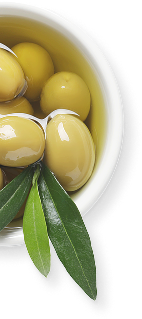
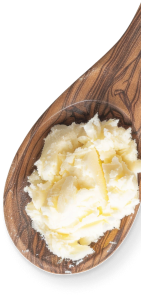


Natural carrot juice, carrot oil, goat milk, raw honey, and nourishing plant oils and butters are packed into this hydrating shampoo bar to replenish moisture and add luster and body to hair. Give it a try for soft, shiny, and manageable hair. Made with Certified Humane Raised & Handled® Goat Milk.





Good For: Normal to Dry Hair, Body & Bounce, Frizz
Our naturally conditioning goat's milk shampoo bar, jam-packed with ingredients chosen to help nourish the hair and scalp, is the perfect addition to your hair care routine. Give it a try for soft, shiny, and manageable hair.
Gentle, Goat's Milk helps condition and adds body and luster, leaving hair soft, shiny, and manageable. The proteins and fatty acids in goat milk nourish hair, help control frizz, define curls, and provide a rich moisturizing lather. Our goat milk shampoo is NOT made with goat milk powder. We use real Certified Humane Raised & Handled® Goat Milk.
Honey helps hydrate, adds shine to dull hair, and and acts as a natural sealant, holding moisture and shine in the hair. It may even help ease inflammatory scalp conditions.
The beta carotene in carrot juice and oil drench thirsty hair with nutrients. The nourishing and moisturizing properties of carrot oil make hair softer, smoother, and shinier.
Shea butter conditions and moisturizes while the essential oil blend enhances our already luxurious hair care formula.
🍃NATURAL & ECO-FRIENDLY: We are committed to healthy skin, healthy people, and a healthy planet. Packaged in recyclable boxes, there is Zero Waste & No Plastic. No synthetic ingredients. No fragrance oils, dyes, sulfates, silicones, or preservatives. Made with ingredients that are biodegradable, Certified Organic, non-GMO, cruelty-free, sustainably produced, and ethically traded.
🍃OUR BARS ARE BIG & TRAVEL FRIENDLY: Our natural shampoo bars are 5.6 oz (159 g) & a perfect choice for TSA-friendly travel. They can do extra duty as a body soap or for a foamy lather wet shave. Great for camping or the gym.
A sulfate-free, silicone-free, paraben-free natural shampoo
Looking for a different shampoo bar?
Finding the right bar is important but we believe that using the proper technique to wash your hair is the best way to ensure a successful transition from synthetic shampoo to natural shampoo bars.
Our natural shampoo bars are a lot more concentrated than liquid shampoos. They contain extra oils and butters to nourish hair.
If you do not build a nice lather and rinse really well you will have areas that remain coated with the soap oils, which can make it look or feel “gummy.”
***Notice in the techniques below that we do NOT recommend lathering up the length of your hair with the shampoo bar. As you use your fingers to rinse the lather through the strands, there is enough shampoo to clean the length. These techniques help prevent coating your hair strands with shampoo residue.
If you are new to shampoo bars please our blog, "How to Use a Natural Shampoo Bar" for more detailed information.
This technique helps prevent pockets of shampoo residue in the length of your hair especially if you have long or thick hair.
Wet Hair: One of the most important steps is to begin with thoroughly wet hair--I mean a lot of water. Be sure that the water saturates your hair all the way down to the roots.
Create the Lather: There are two possible ways both of which help prevent pockets of shampoo residue left in your hair that can make hair feel tacky.
 Massage the Lather into your Scalp only at the roots of the hair until you work up a really good lather
Massage the Lather into your Scalp only at the roots of the hair until you work up a really good lather
Using your Fingers like a Comb: smooth the lather down the length of your hair as you rinse with water. To prevent tangles, be sure to always work from the top down, use your fingers like a comb, not a mixer, and don't pile your hair on your head,
Rinse, rinse, rinse, rinse and rinse again. I cannot stress how important this step is to shampoo bar success. In order to remove the excess shampoo, which can leave a filmy feeling and weigh hair down, do NOT rush this step! The rinsing should take longer than washing and lathering time.
If your hair has a residue before or after shampooing, use an Apple Cider Vinegar Rinse or a baking soda clarifying rinse.



Total price: $35.52
Create Your Own Bundle
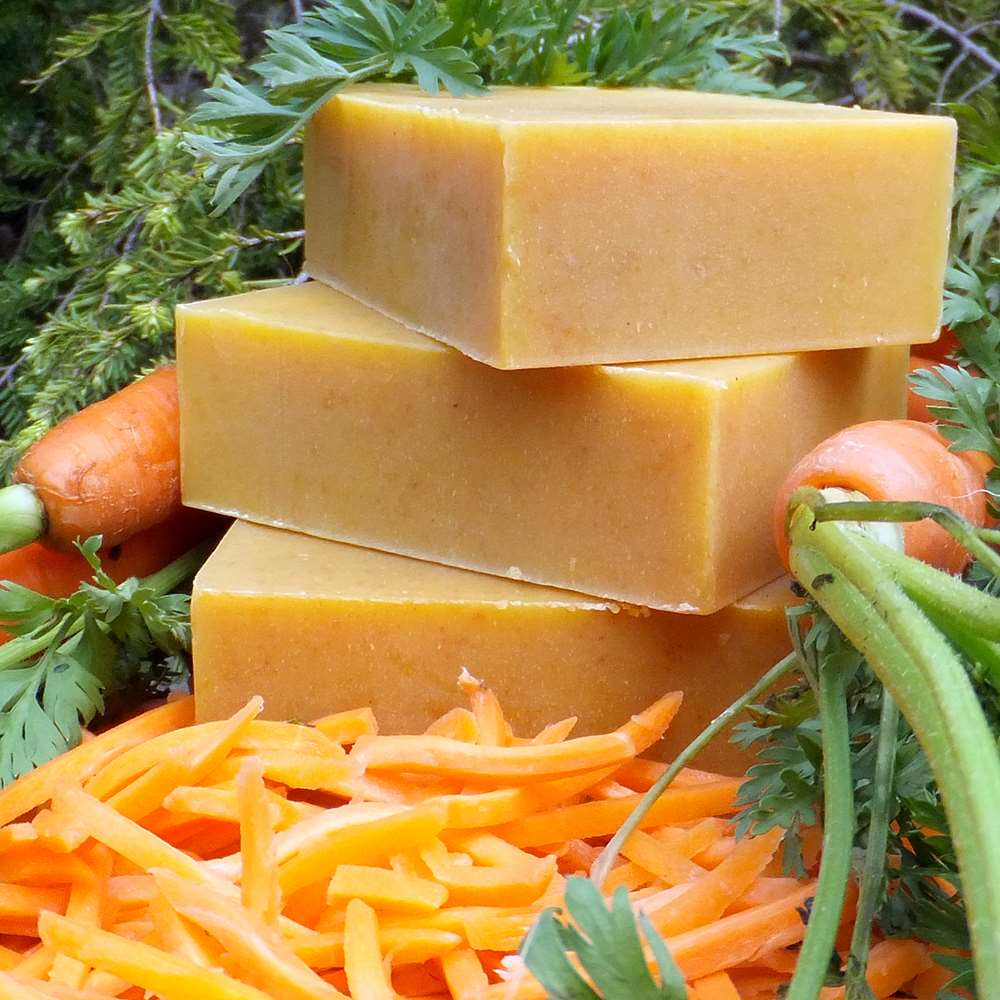
The goal is simple: to Harness the Power & Simplicity of Nature® to cleanse, soothe, heal, and protect your skin and hair!
Our unique formulas rely on moisturizing oils and butters, healing botanicals, and pure essential oils. We choose every ingredient with one end-result in mind….the BEST possible natural skin care for YOU!
 Organic Carrot Juice
Organic Carrot Juice
 Goat Milk
Goat Milk
 Organic Honey
Organic Honey
Organic sunflower oil is infused with organic carrots
|
*Ingredient is Fair Trade Certified ^Used in the saponification process to turn oil into soap and glycerin. None remains in the finished product.
Made with certified organic Carrot Juice, Carrots & Honey
|
In my youth, I had pin-straight hair and was envious of friends with wavy and curly hair. But those friends were jealous of my straight hair! Whether your hair type is straight, wavy, curly, coily, or somewhere in between, your locks are beautiful.
In the same way that understanding your skin type is important for creating an effective skincare routine, determining your hair type can play a huge role in helping you to reach your hair goals.
Hair type has 4 major categories: straight hair (type 1), wavy hair (type 2), curly hair (type 3), and coily hair (type 4). These 4 types of hair are further categorized into A, B, and C subtypes creating 12 total categories.

The best way to determine your hair type is to see your hair in its natural state. By simply looking at your hair you can recognize some obvious characteristics. The next time you wash your hair, allow it to air-dry without any styling or hair products. This will help you to define the natural shape or pattern (texture) of your hair. For example:
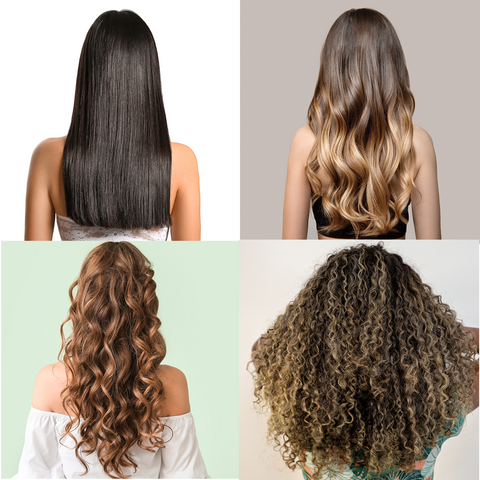
It is important to remember that most people do not have just one type of hair. They often have two different hair textures on various parts of their head.
Each of these hair textures will need special care and attention to enhance its natural best characteristics. Also, even though two people share the same natural wave, it does not mean they possess the same exact hair type. You are unique!
The terms "thick hair" and "thin hair " can be confusing. You can have dense fine hair — meaning lots of thin strands packed together — or coarse hair that’s sparse — fewer thick strands spread farther apart.
The texture of your hair is determined by the thickness or diameter of an individual hair strand. There are 3 basic categories:
To determine your hair texture, use a single strand of hair and compare it to the size of a piece of typical sewing thread.
Thin hair does not style very easily. Medium hair is relatively easy to style and can hold curls for a longer time period. Thicker strands are very easy to curl, but because they are less pliable, they can be difficult to style or hold their shape.
Texture is what determines how your hair feels between your fingers and how it responds to moisture and styling.
Hair density is the number of hair strands per square inch of your scalp.
Density affects how hair looks overall, how hair will react to certain products, and how well it will hold different hairstyles. People with low-density hair often do better with lightweight products, while high-density hair may need richer formulas to coat every strand.
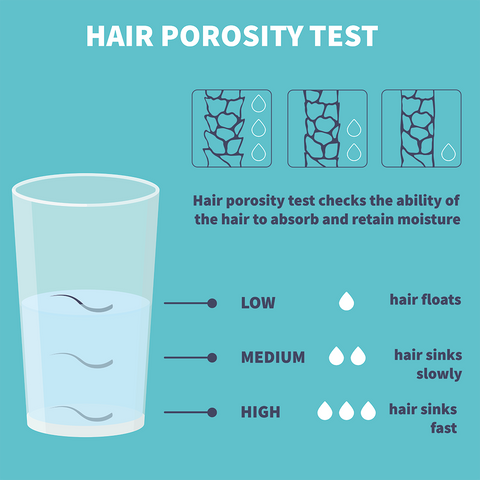
Porosity refers to your hair’s ability to absorb moisture as well as hair products. You can easily determine the porosity of your hair with a simple experiment.
It seems like hair with high porosity would be well hydrated all the time since it can easily absorb moisture easily. However, due to the gap areas around the cuticle, the hair also loses moisture very easily, which can result in hair that is dry, brittle, frizzy, and prone to breakage.
On the other hand, that flattened cuticles of hair with a low porosity actually blocks moisture from being absorbed into the strands. Since hair care products are not readily absorbed, product buildup on hair strands is often a problem. Hair care products should be applied sparingly while hair is still damp so product is more easily absorbed and distributed.
To keep your hair healthy and nourished, it is important to develop a haircare routine that includes proper hydration. Knowing your hair type is crucial, as it helps you choose the right products for straight, wavy, curly, or coily/kinky hair.
Most people find that shampoo bars are easier on color-treated hair than commercial shampoos.
We have many customers who color their hair and use our gentle shampoo bars. One customer who "darkens" her hair wrote to tell us that she is now able to go one month longer before recoloring her hair.
Another customer who "lightens" her hair, wrote that the color stays "nicer" longer and she does not get that "brassy" blonde color anymore.
All of our shampoo bars are mild enough for color-treated hair, but since everyone's hair and coloring products are different, please do a strand test to judge for yourself.
To do a strand test, shampoo a strand of hair in a non-conspicuous area and rinse. Notice if there are any changes.
For color-treated hair, we recommend creating a lather in your hands rather than rubbing the bar directly on your head. Then using your fingers massage the lather into your scalp at the roots of the hair until you work up a really good lather.
It is also best to rinse color-treated hair with cool or lukewarm, not hot, water.
Choose your shampoo bar based on your hair type, knowing that coloring hair may change its texture.
Permanent hair color does not simply stain your hair but penetrates the shaft to alter the natural hair pigment. Since the outer cuticle of the hair has been penetrated by the hair dye, your natural hair oil may have trouble penetrating the hair shaft. As a result, your hair may become more dry or brittle.
Since it takes time for the hair cuticles to fully close and trap in the color, be sure to follow the directions from your salon or the product package as to how soon you should shampoo after coloring hair.
Also, note that chlorinated water can change the hue of your color-treated hair.
The good thing about the shampoo bars is that they actually prolong color - before I started using them, I'd have to dye my hair every 3 weeks, now it's every 5-6 weeks. Venessa, Indiana
For more information read our blog, "Everything You Want To Know About Natural Shampoo Bars!"
The wholesome goodness of our handcrafted soap is available for your hair.
Shampoo bars are an all natural conditioning shampoo in a solid bar form. Yes, this is real shampoo in a solid bar. Shampoo bars are not a new idea.
They were commonly used before liquid detergent shampoos and conditions were invented in the 1940s.
Although the process for making a shampoo bar is the same as making soap, our shampoo bar "recipes" are specially formulated with natural plant oils, butters, botanicals and essential oils that nourish your hair and scalp.
Our shampoo bars contain no artificial fragrance, color, preservatives, detergents, alcohol, urea, formaldehyde, sodium lauryl sulfate, DEA, propylene glycol - or any of the other synthetic hair care additives.
Each of our shampoo bar selections contains a different blend of natural plant oils, essential oils, and herb infused oils. No two recipes are the same.
Click here for help choosing an all natural shampoo bar!
Please read "Everything About Shampoo Bars!"
Conventional shampoos and conditioners, even some that claim to be natural, contain waxes, silicones, or other additives that coat your hair to make it feel smooth. They also contain synthetic detergents which rinse out more easily than a soap-based shampoo bar.
Since our natural sulfate-free shampoo bars do not strip hair like detergent-based shampoos, you may notice your hair feels different immediately after washing because your hair is accustomed to the squeaky clean feel of a detergent-based shampoo.
Switching from conventional shampoo to a natural shampoo bar may mean a transition or adjustment period. While many folks have little problem with their hair adjusting to a new routine, some do.
Since everyone's hair is unique it is difficult to tell you exactly what your transition, if any, will look and feel like. Your hair may feel greasier than normal or it may even feel drier than normal. It may feel waxy, coated, or just weird as your scalp works to re-balance its oil production.
The transition period can range from a few days to a few weeks. It really depends on how damaged your hair is, how much residue and build-up is present, your genetics, your water, and even the technique that you use to shampoo your hair.
Transition is literally a time for your hair, which has been addicted to chemical-laden shampoos, to go through withdrawal, and learn to live a chemical-free life.
We have been making and using natural shampoo bars for over 14 years and have received so many questions.
It may take some patience, but if you can persevere, your reward will be healthy, soft, and silky hair.
For more detailed information and great transition tips please read our blog "Tips Adjusting To Shampoo Bars."
Check out our selection of ACV Rinses
I wish I could use an apple cider vinegar (ACV) rinse very day. Besides creating tangle-free locks, I also love the way it makes my hair look and feel. As I have gotten older my hair has become drier and I can only use an ACV rinse 2 or 3 times week.

Blog: Make Your Own Natural Vinegar Hair Rinse
Men and women with short hair seldom have hair adjustment problems to natural shampoo bars. However, folks with long hair may have to change their shampoo technique when switching from commercial liquid shampoo or synthetic detergent shampoo bars to natural bars.
We have discovered that people with long hair often feel the need to use too much shampoo. Also, it is more difficult to rinse shampoo out of all the little nooks and crannies in long hair. As a result, there are pockets of soap residue left in the hair that make hair feel tacky.
I have found that many times the proper technique makes all the difference.
 I have long, fine hair. Below is my technique for using a shampoo bar.
I have long, fine hair. Below is my technique for using a shampoo bar.
Dry and style your hair as usual!
Some folks do, and some don't!
If you are using a conditioner because your hair is dull, lacks luster, and is dry--you may not need a conditioner--that's another plastic bottle saved! Since commercial shampoos contain petroleum products that are actually drying to your hair and scalp, conditioners are usually needed.
Our natural shampoo bars will not strip the natural oils from your hair, so you will not need the typical moisturizing conditioners that people use to replace the natural oils stripped by detergent shampoos.
Apple Cider Vinegar (ACV) rinses are an excellent addition to any natural hair care routine and can help bring back body and shine to dull, lackluster hair.

Hair tangles result when individual hairs go in different directions and intertwine.
The outer layer of the hair, the cuticle, is made of overlapping layers of long scales that lie along the surface of the hair like shingles on a roof.
The condition of the cuticle scales in part determines whether you are going to have tangly hair. When you shampoo or even wet your hair, the cuticle opens making it prone to tangling.
The way you shampoo and your hair type can affect hair tangles. I have long, fine, thin hair that is very prone to tangling. Just imagine all of those little strands of hair as very thin strings—now put little burrs on the strings (the open cuticle) and you can see my problem.
When I used a commercial shampoo I would go through a 16-ounce bottle of conditioner every week—just to get a comb through my hair. Using my shampoo bars has made a big difference.
I wish I could use an apple cider vinegar (ACV) rinse every day. Besides creating tangle-free locks, I also love the way it makes my hair look and feel. As I have gotten older, my hair has become dryer and I can only use a traditional ACV rinse 2 or 3 times per week. But I keep a spray bottle of very dilute ACV rinse that I use more often.
Helpful hint: If I comb through my hair length while it is still lathered and continue to comb as I rinse, the tangles comb out more easily.
Some customers have reported that they needed to continue using their traditional conditioner for a while and then were able to slowly wean off of it. I say, whatever works for you!




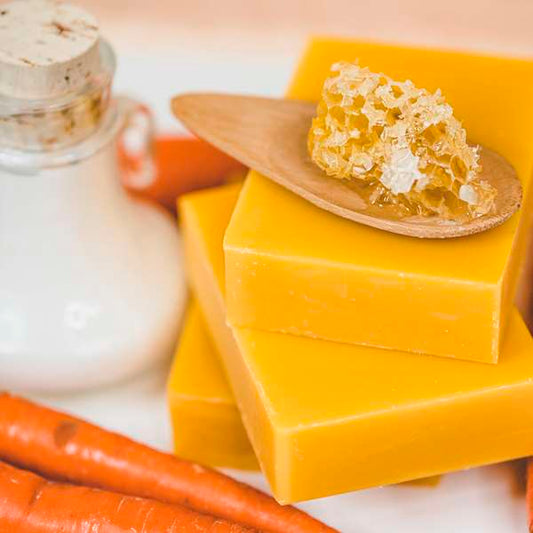
Help Me Choose a Natural Shampoo Bar: Everyone's hair is unique. For that reason, every one of our natural shampoo bars is made from a different recipe. We wish that we could recommend the perfect natural shampoo bar for each individual hair type, but here are some suggestions.
Read Post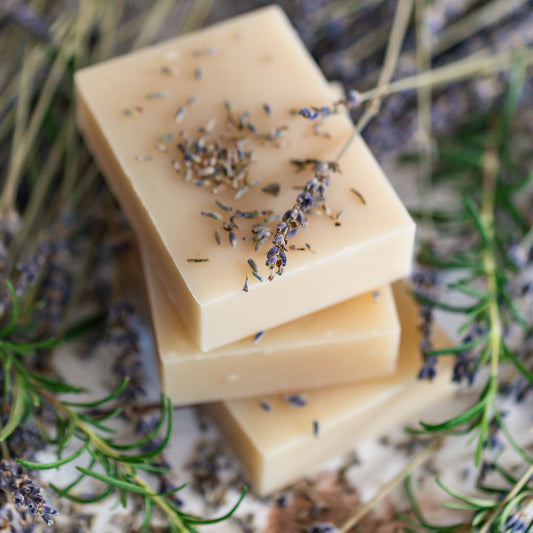
Explore the world of natural shampoo bars, get answers to your FAQs and learn about the benefits, ingredients, hair type suitability, and usage tips. Start enjoying healthier, happier hair.
Read Post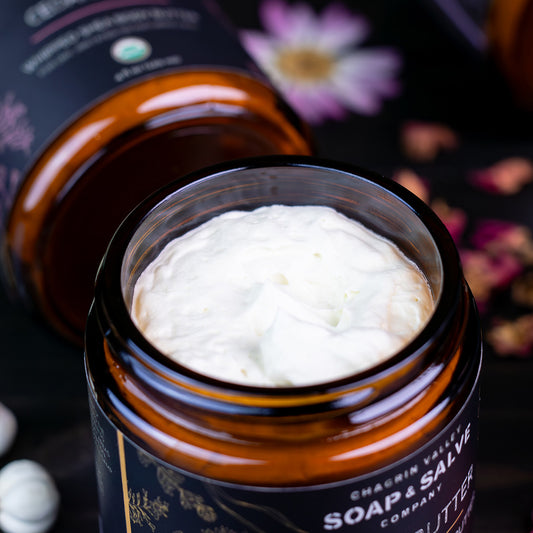
Dry hair can be frustrating, but understanding its causes and taking proactive steps can help revive your locks. By recognizing signs of dryness, incorporating nourishing hair care routines, and using effective products, you can transform brittle, lackluster hair into soft, vibrant tresses.
Read Post